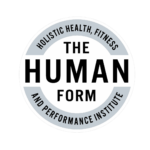
When many people start on a new health and fitness program, they approach it as an all-or-nothing endeavor. Because you might have been in a “nothing” phase for awhile, the tendency can be to swing the pendulum over to the “all” side of the equation.
First, let me say that all the coaches here at HFF certainly commend the enthusiasm and willingness to work hard toward your new goals.
However, the “shadow side” for many of you can be a Obsessive-Compulsive attitude towards working out and nutrition, along with other aspects of the journey. That mindset and the level of activity (physical and mental) it generates is usually counterproductive to your specific goals, such as weight loss or completing your first marathon, as well as to your overall, long-term health.
Put simply, more is NOT always better, and can actually create the exact opposite of the results that you’re seeking.
Minimum Effective Dose (MED)
The term Minimum Effective Dose (MED) refers to the idea of only doing the amount of work (in regards to training, nutrition, supplementation etc.) that will trigger the desired results.
In terms of strength training, keep in mind that you’re actually doing damage to your muscle tissues. This is on purpose, of course, in order to force the adaptation response i.e. getting stronger, in preparation for the next anticipated workout.
This system works beautifully, IF you respect the MED principle.
This essentially means that your goal should be to perform your workouts with perfect form, and only with the minimal amount of volume and intensity needed to trigger the adaptation response. Any amount of work above and beyond the MED is at best a waste of time, and at worst, can lead to over-training, strength loss, and injury.
Note: The adaptation response works so well because it allows you to intentionally cause damage to your muscles, rest and recover, and come back stronger than you were at the previous workout (called “super-compensation). However, if you cause too much damage and/or don’t fully recuperate, you will actually get WEAKER over time. Not cool.
The graphic below illustrates that immediately after the training session you are weaker than before the workout. Only after you’ve been able to fully recover and super-compensate, will you be able to perform better than your baseline level. If you train hard while still in the pink section below your baseline, you’ll start a downward trend, meaning going the opposite direction of where you want to be.
So, how do you measure if you are meeting the MED with strength training workouts?
Great question! And the answer is simple: Are you getting stronger each time you repeat a particular workout/exercise?
“Getting stronger” can be performing an extra rep, adding load (even a small amount), or holding for more time (in the case of static exercises).
It is important to keep in mind your actual goals in hitting the gym. For most people, it is either to look better, feel better, or perform better.
I find that many people get confused some where along the way, and think that they’re seeking fitness, just for the sake of fitness. I would advise to be careful, as this can lead to unhealthy fitness endeavors – which are quite popular these days.
Bottom Line: Start out your strength training workouts with moderate volume and frequency. For many people this can be 2-3x a week for 40 minutes. Then use the “getting stronger” guideline as your benchmark to determine if you are doing enough in your workouts (along with proper nutrition and sleep – topics for another blog post) to trigger the adaptation response. You can always add in more sets, reps, or workouts, if needed and appropriate.

